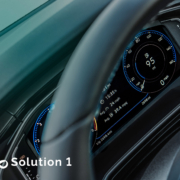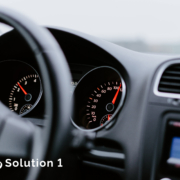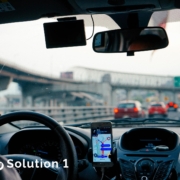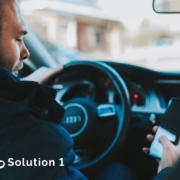ADAS technologies are reliant on vehicle-fitted sensors collecting and interpreting the correct information from the driving and road environment in order to function properly.

The rapid growth of transportation needs, for both people and goods, as well as the evolution of Information and communication technology, has led to new standards concerning the transportation domain. Moreover, the evolution and the maturity of sensor technologies enable the establishment of new transportation paradigms which can offer a better understanding of driving behavior.
In addition, the growing number of vehicles moving daily, especially in urban centers poses new threats to both people and the environment. Such as, according to the report by the European Automobile Manufacturers Association in 2019, in the European Union countries, around 242.7 million passenger cars.
“Adding to the increasing number of vehicles and car accidents. It is worth mentioning that the World Health Organization 2020 reported that in 2016 about 1.35 million people lost their lives in car crashes worldwide.”
In recent years, advanced driving assistance systems have significantly progressed, opening novel horizons in reducing traffic accidents. Specifically, with the rapid development of in-vehicle information systems and collision warning systems, a large amount of natural driving data can be acquired through these types of advanced driving assistance systems.
In this direction, monitoring and analysis of vehicular data originating from in-vehicle sensors can provide useful insights and predict possible menacing driving behavior both in environmental and safety terms. In response to the great need for driving style identification for traffic safety, naturalistic data collection is becoming ever more feasible as the penetration rate of advanced driving assistance systems increases in vehicles and on roadways around the world.
The data needed for driving behavior analysis are collected through onboard vehicle sensors. All vehicles manufactured during the last decades had various sensors installed in order to measure and monitor their speed, temperature, the engine’s revolutions per minute, and more.
Some years ago, these measurements would not be transferred outside the vehicle and their usage was only limited to in-car diagnostics purposes. The rapid development of information and communication technology made vehicles with networking capabilities so that they are now enabled to communicate with external devices such as smartphones, databases, vehicle-to-vehicle communication, emergency call centers, highways, and more.
Even the older vehicle models can transfer data to external applications by engaging on-board diagnostics units. Especially, the OBD II protocol is commonly used for diagnostics reading. Thus, even older vehicles can be equipped with a compact device that can gather different measurements and diagnostic messages and subsequently transfer them to a smartphone or another device with networking capabilities in order to be stored and further analyzed to an external platform or database.
Furthermore, alongside the rapid development of sensors and networking technologies, there is a remarkable evolution in data streaming, storage, and analysis technologies. The big data and artificial intelligence applications which now are commercially available have enabled real-time analysis of fast-paced generated data such as those originating from vehicles. The information exchange could be managed efficiently to guarantee that the system is useful and capable of providing a road safety benefit.







